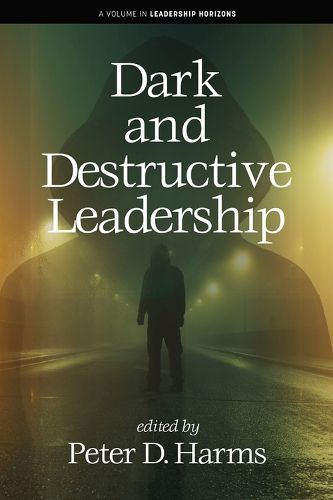Readings Newsletter
Become a Readings Member to make your shopping experience even easier.
Sign in or sign up for free!
You’re not far away from qualifying for FREE standard shipping within Australia
You’ve qualified for FREE standard shipping within Australia
The cart is loading…






This title is printed to order. This book may have been self-published. If so, we cannot guarantee the quality of the content. In the main most books will have gone through the editing process however some may not. We therefore suggest that you be aware of this before ordering this book. If in doubt check either the author or publisher’s details as we are unable to accept any returns unless they are faulty. Please contact us if you have any questions.
Destructive leadership has become an umbrella term for a range of toxic leader behaviors, intentional or unintentional, which are associated with negative outcomes for followers and/or organizations (Einarsen et al., 2007; Krasikova et al., 2013; Mitchell et al., 2023; Schyns & Schilling, 2013; Thoroughgood, 2021). By contrast, dark leadership concerns the psychological mindset of the leaders, not just what they do, but also why they do it (Hogan & Sherman, 2022). To this end, it assesses the traits, motives, abilities, and perceptual tendencies that lead to patterns of toxic leader behaviors that we label as being destructive (see Hogan et al., 2021). This book is intended to provide an in depth look at the topic of Dark and Destructive Leadership. Our author teams have provided insights into the origins and history of dark leadership, the personality and developmental antecedents associated with destructive leadership behaviors, the differential reaction of various types of followers to these toxic leadership styles, advances in the assessment and analysis of dark and destructive leadership styles, the differential display of these characteristics based on gender, and what we currently know about developmental and training interventions for leaders in danger of being derailed by these characteristics.
$9.00 standard shipping within Australia
FREE standard shipping within Australia for orders over $100.00
Express & International shipping calculated at checkout
This title is printed to order. This book may have been self-published. If so, we cannot guarantee the quality of the content. In the main most books will have gone through the editing process however some may not. We therefore suggest that you be aware of this before ordering this book. If in doubt check either the author or publisher’s details as we are unable to accept any returns unless they are faulty. Please contact us if you have any questions.
Destructive leadership has become an umbrella term for a range of toxic leader behaviors, intentional or unintentional, which are associated with negative outcomes for followers and/or organizations (Einarsen et al., 2007; Krasikova et al., 2013; Mitchell et al., 2023; Schyns & Schilling, 2013; Thoroughgood, 2021). By contrast, dark leadership concerns the psychological mindset of the leaders, not just what they do, but also why they do it (Hogan & Sherman, 2022). To this end, it assesses the traits, motives, abilities, and perceptual tendencies that lead to patterns of toxic leader behaviors that we label as being destructive (see Hogan et al., 2021). This book is intended to provide an in depth look at the topic of Dark and Destructive Leadership. Our author teams have provided insights into the origins and history of dark leadership, the personality and developmental antecedents associated with destructive leadership behaviors, the differential reaction of various types of followers to these toxic leadership styles, advances in the assessment and analysis of dark and destructive leadership styles, the differential display of these characteristics based on gender, and what we currently know about developmental and training interventions for leaders in danger of being derailed by these characteristics.